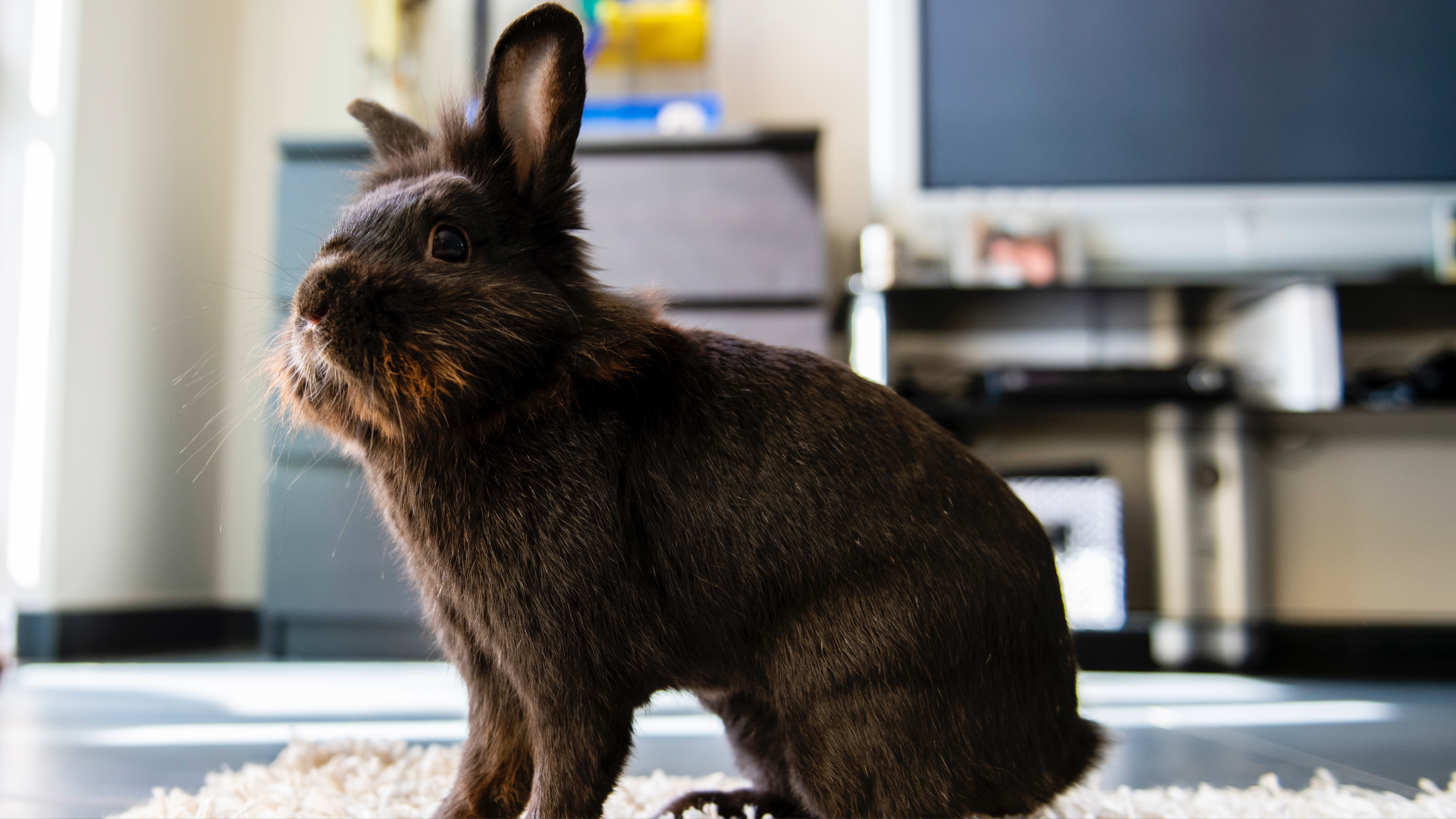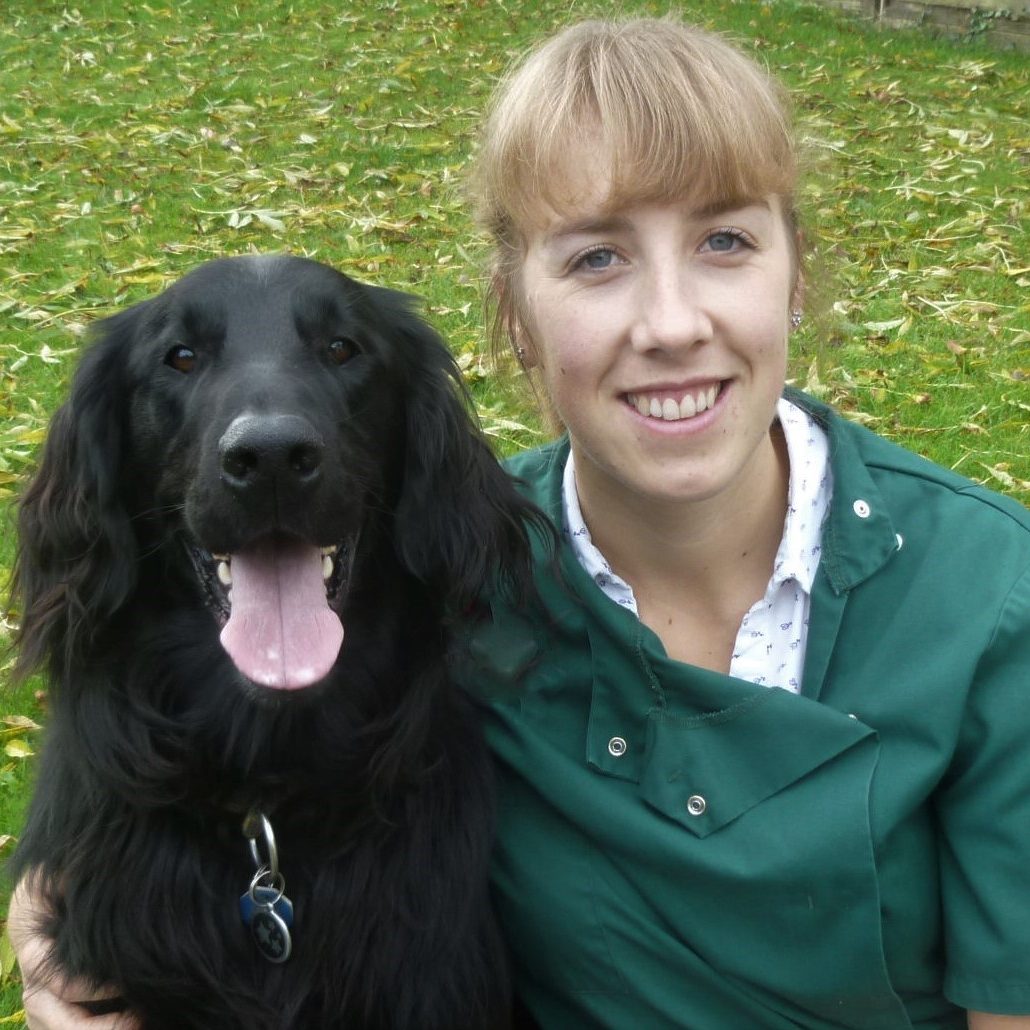Vet reveals how to house train a rabbit (and it's just 5 steps!)
Keen to learn how to house train a rabbit? Our step-by-step guide has got you covered.

If you've just welcomed a floppy-eared friend into your family, learning how to house train a rabbit is likely high on your priority list.
Many of us make the decision to house our bunnies in one of the best indoor rabbit hutches so we can have them close by, but the drawback to keeping our pets indoors is that we have to go through the process of house training them.
Thankfully, it's not as difficult as you might think. In fact, according to Dr. Rebecca MacMillan, toilet training rabbits is actually quite straightforward. To help you get the job done in record time, we asked Dr. MacMillan to walk us through the process and it turns out it's just five simple steps.
Ready to start house training your bunny? We're not hare to mess around so lettuce get straight to it (sorry, we couldn't help ourselves!)
How to house train a rabbit
1. Choose a litter box: As a new bunny owner, investing in one of the best rabbit litter boxes is the first step in the house training process. But with so many to choose from, the process can feel daunting to say the least. Thankfully, Dr. MacMillan has some guidelines on what to look out for.
"Select a large litter box, so that your rabbit has plenty of space to turn around," she advises. "The box needs to have one lower side so that they can hop in and out of it with ease. Ideally, the back would be higher at around 10-20cm though, to avoid any accidental urine sprays or litter spillages. Remember also to choose a litter box that is durable and easy to clean."
2. Select the right litter: Once you've selected a litter box, the next thing you'll want to do is shop around for the best litter for rabbits. While this may sound like a relatively unimportant purchase, having the right litter can make all the difference when it comes to whether or not your bunny will do their business where they're meant to.
Get the best advice, tips and top tech for your beloved Pets
"Choose unscented paper-based litter, which has far less dust than wood shavings (this can lead to respiratory issues)," says Dr. MacMillan. "You could alternatively use alfalfa, straw, or hay – some rabbits enjoy having a nibble while toileting!"
3. Start small: How much space does a rabbit need? When it comes to house training your floppy-eared friend, Dr. MacMillan says it's important to start small and confine your bunny to one area when you're toilet training them. Granting them access to the whole house at once can feel overwhelming and increases the chance of accidents.
"First, keep the litter box in one corner of their enclosure and allow your rabbit time to familiarize themselves with it by limiting their access elsewhere. You can keep your rabbit confined to a generous sized enclosure, or pen a small area off for them.
You can encourage them to toilet in it by placing some soiled litter and droppings in there. Many rabbits naturally choose to toilet in one corner of their enclosure anyway, so try and site the litter tray there if you can.
Clean the rest of their enclosure frequently. You can always give your rabbit a treat or some hay when they are in their litter tray to further encourage them."
4. Give your rabbit a bit more space: Dr. MacMillan suggests that you start to give your bunny more room to roam about in once they understand the concept of the litter box and are consistently using it. You can do this by adding in more litter boxes around the house.
"In addition to their enclosure litter box, place a litter box or two in various corners of the room while allowing your rabbit exploration time around the house. Again, place some droppings and urine in it to encourage use. Clean up any accidents that happen outside of the litter box straight away, so that your rabbit doesn’t re-use that area."
Just be sure you read our guide to how to bunny proof a room before you let your rabbit loose as this will ensure they stay safe (and keep your cables and clothing from being chewed!)
5. Take the training wheels off: Worried you might have a house filled with rabbit litter trays for the rest of your life? Don't be. According to Dr. MacMillan you should find you're able to start removing these once your rabbit has stopped having accidents.
"You may be able to remove the litter trays around the house and instead just leave the one litter box for them to use in their enclosure. Just make sure that they always have free access to their enclosure so that they can hop back inside to toilet at any time. Continue to ensure the rest of their enclosure is kept clean."
Are rabbits easy to house train?

If you've just welcomed a new bunny into your family, you may be wondering how easy they are to house train. Thankfully, Dr. MacMillan says rabbits are usually very straightforward to house train, as long as you're consistent with your approach and clean up any accidents quickly.
"If toileting accidents do occur, then their poop is at least fairly easy to deal with. Just ensure your clean any areas with a pet-safe enzymatic spray, to discourage further inappropriate toileting in that area. Neutered rabbits tend to be easier to train than entire ones, however, as they have less tendency to scent mark with urine or feces."
How long does it take to house train a rabbit?
When you have a rabbit pooping around your house, it's understandable that you might start to feel a bit frustrated with the whole house training process. But Dr. MacMillan says it's important to remember that rabbits learn in their own time and patience is key.
"The majority of rabbits will learn within a few days to a few weeks. There is no difference between males and females – they both take the same amount of time to learn. However, you will find it more straightforward in a pet that is neutered."
Why does my bunny not use the litter box?

Struggling to get your rabbit to use their litter box? Dr. MacMillan says there could be several reasons why your bunny is choosing not to use it.
"If the box is too small or too difficult to access, this could put your rabbit off from using it," she says. "Not cleaning the litter box often enough could also create problems. While you want it to have a little bit of urine and faeces in it during training, don’t allow the box to become completely saturated." Check out our guide to how to clean a rabbit cage for more information on this.
Finally, Dr. MacMillan says that sometimes a medical complaint may mean your rabbit is not using their box appropriately. "Urinary tract infections or digestive issues could cause them to toilet elsewhere, as can arthritic pain."
Why is my bunny peeing and pooping everywhere?
Having your rabbit peeing and pooping around your house after you've completed the house training process can be a challenging issue to deal with, but Dr. MacMillan says there are normally clear reasons why a bunny may be toileting inappropriately.
Your rabbit could be scent-marking in your house, particularly if they have not been neutered," she explains. "Alternatively, they may not be completely house-trained yet. You may need to take a few steps back with their training."
To do this, consider keeping your bunny in their enclosure with their tray for a while or putting up barriers to prevent them accessing other rooms in the house.
"Place poo and urinated bedding material in their tray. Once they are happy with this, start to increase the area again and consider putting another litter tray outside of their enclosure for a little while too," Dr. MacMillan advises.
"Problems often happen when your rabbit is given too much space too soon, before they are ready. If you are still having problems then get your rabbit checked over by your vet, in case there is an underlying health issue causing toileting accidents."
If you enjoyed this feature be sure to check out 32 facts about rabbits that might surprise you. Plus, we answer the question, can rabbits live alone?

Rebecca is a vet surgeon who graduated from the Royal Veterinary College in 2009. She has a wealth of experience in first opinion small animal practice, having done a mixture of day-to-day routine work, on-call emergency duties and managerial roles over the years. She enjoys medicine in particular and she is proud to have recently achieved a BSAVA postgraduate certificate in small animal medicine (with commendation). She writes on various feline and canine topics, including behavior, nutrition, and health. Outside of work and writing she enjoys walking her own dog, spending time with her young family and baking!

Kathryn is a freelance writer who has been a member of the PetsRadar family since it launched in 2020. Highly experienced in her field, she's driven by a desire to provide pet parents with accurate, timely, and informative content that enables them to provide their fur friends with everything they need to thrive.
Kathryn works closely with vets and trainers to ensure all articles offer the most up-to-date information across a range of pet-related fields, from insights into health and behavior issues to tips on products and training.
When she’s not busy crafting the perfect sentence for her features, buying guides and news pieces, she can be found hanging out with her family (which includes one super sassy cat and a kitten), drinking copious amounts of Jasmine tea and reading all the books.
She has written for a range of publications, including Fit&Well, Top Ten Reviews, LiveScience, Goodto, and Product Hunt.
